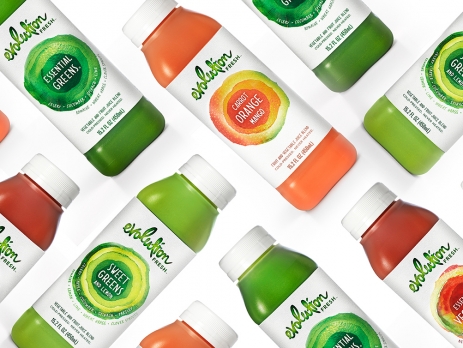
A product´s label is a fundamental marketing tool as it plays a very important role in product identification and also in its marketing and communication process.
More and more marketers use this powerful communication tool to convey the identity and values of a brand or product and, with that, try to win the attention and preference of consumers. It is not by chance that in the construction of a product’s marketing mix, the label and packaging assumes a great importance because marketers are very much aware of the crucial role both have in the differentiation process and in the consumer’s behavior.
Nowadays, questioning the importance of a product’s label in its success reveals to be a very short-sighted and anachronistic posture that can have disastrous consequences.
Times have changed…
In the past, marketing a brand or product was a much less complex process than it is today. The markets were much less competitive as there were fewer brands sharing the market and, for this reason, competition for consumer attention and preference was smaller and easier.
Things are abysmally different these days. We walk into a store and are confronted with shelves literally filled with hundreds (or even thousands) of brands and products competing for our attention. In this very competitive and ruthless ecosystem, for a product to really stand out from other competing products, it will have to strategically use all its strengths, namely the notoriety of its brand, the shapes, colors, type of packaging and, of course, the graphic design of its label.
Marketing and psychology hand in hand in creating appealing labels

Several qualitative studies have been carried out on the design of product labels and packaging and the real and measurable effects they have on consumers. The object of these studies was not sales but the effectiveness of labels in terms of their ability to attract and retain consumers’ attention. These qualitative studies can tell us a lot about consumer perception and also about the effectiveness of a label or type of packaging. This understanding allows brands to create more impactful and effective labels and packaging and thereby increase the visibility of their products at points of sale, consumer preference and consequently sales (although, as mentioned above, the object of the study was not sales).
These studies allowed us to conclude that, with regard to labels, the elements that were more successful were also those that increased involvement/engagement among the sample of volunteers who participated in the study.
To increase the degree of involvement of consumers or buyers, it is important to pay attention to a number of aspects that will effectively make all the difference in this process. Let’s list a few.
1- Understand that the label should be an extension of the product’s identity

During the creative process it can sometimes be easy to lose the product identity and other important information for the consumer in a tangle of design elements. It is essential that the designer unequivocally understands the identity and positioning of the product and the brand and create a label or packaging that is an extension of this identity and not something that does not corroborate it or, worse, contradict it. Here, the principle is very simple: “Form follows function”, that is, creative freedom in the label creation process cannot jeopardize the product’s identity.
2- Quickly “grab” consumer´s attention

We cannot forget that our product will be displayed on shelves full of competing products, many of which belonging to brands that also invest heavily on marketing and, therefore, on the attractiveness of their labels and packaging.
To get the consumer’s attention in such a competitive environment, it is necessary to get into the mind of the buyer/consumer and understand how he chooses and buys products.
The above studies have identified some aspects that largely influence the ability of the label or packaging to attract attention.
Placing the label at the center of the product, using contrasting colors as well as unusual patterns or images (without sacrificing simplicity), appealing to consumers’ emotions through colors and images and keeping the design relevant to both the consumer and the product are the most important aspects when you want to create a label or package that has the ability to catch the consumer’s attention and seduce him to the point of wanting to buy the product.
3- “Exaggerate to sell”

Another main purpose of labeling and packaging is to “over-hype” the product (but with caution and moderation). As the marketer’s purpose is to attract the attention of the potential customer, the product’s label and packaging must be able to beautify it in order to increase its visual appeal and the perception and understanding of its benefits. For this purpose, graphic and textual elements are often used to enhance the main benefits of the product. Take, for example, a bodyweight implementer (commonly known as a Weigh Gainer) who uses bold fonts and words like MEGA GAINER or MONSTER GAINER on the packaging.
This bold (but often used) strategy can instantly draw attention to the product, spark interest in the product in the customer’s mind through an attractively designed and suggestive label.
4- Bring the product closer to its segment but distance it from its competition

The creation of a label or packaging for a product must be a very careful process as both are responsible for the first impressions that the potential buyer or consumer has when they see the product for the first time. The label and packaging are the tangible faces of the product, they are the first contact that the consumer has with the product, even before buying or consuming it. Having said that is important to design a label or packaging with great seductive capacity.
However, when designing the label or packaging of a product, special care must be taken to bring the product closer to the segment to which it belongs, so that the consumer/buyer can clearly and immediately understand what type of product it is. For example, it makes no sense to design a label that brings a product closer to the “Go natural” segment if in reality the product belongs to the “Soft Drinks” segment. This type of strategy doesn’t bring good results and often back fires.
If getting closer to the segment is important, so is to move away from our competition, especially the most direct. A product’s label must distinguish a brand or product from products operating in the same market segment. This “distance” in relation to its competition has the ultimate objective of creating the product´s own space and perceived value. Basically, this is what ensures that the product or brand gains its space in the market and in the consumer’s mind. There are brands with such a unique design that even from a distance we can easily identify them among their competitors.




